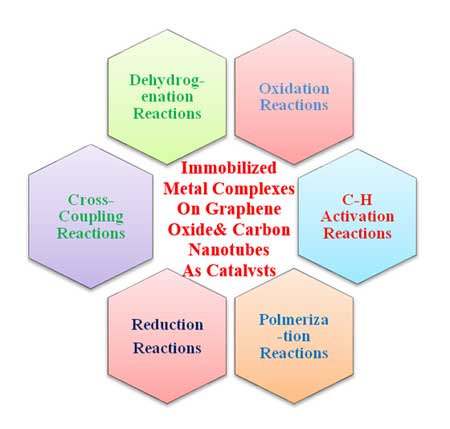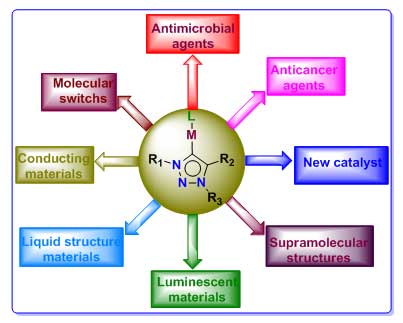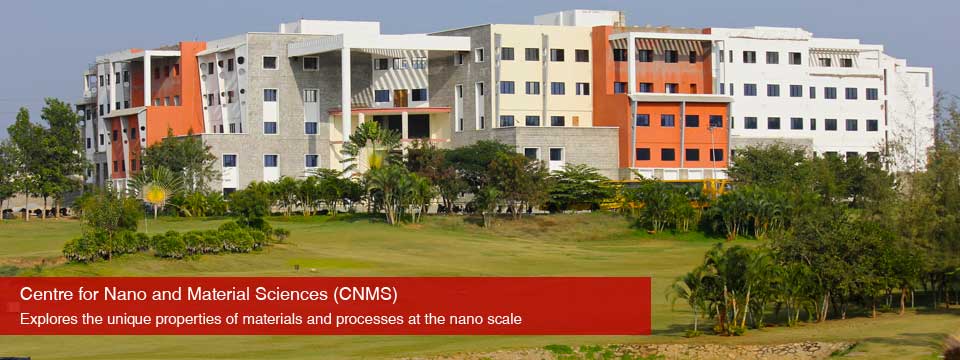1. Metal nanoparticles: synthesis, characterization and catalytic applications
Recently, various new types of metal complexes have been attracted great interest as catalysts in a plethora of organic transformations with excellent catalytic results in terms of yield and selectivity. However, these catalysts, in most cases, suffer from the deficits during their recovery, recycling and the difficulty in separation of catalysts from the products. Therefore, the development of an easily recoverable and recyclable catalyst is still in high demand. The main aim our research is to design, synthesis, characterization and catalytic applications of metal nano particles supported imine, amine, and carbene containing metal complexes in several organic transformations with industrial interest. Furthermore, these catalysts can be easily separated from the reaction media and reused various times without a substantial loss of catalytic activity.
This project consists of three parts:
- Synthesis of metal nanoparticles supported imine, amine, and carbene based metal complexes
- Characterization of metal nanoparticles supported imine, amine, and carbene based metal complexes and
- Application of metal nanoparticles supported imine, amine, and carbene based metal complexes in several organic transformations.
2. Graphene oxide, carbon nanotubes, and graphene nano ribbonsin catalysis

Transition metal catalysed reactions play significant role in the synthesis of many important chemicals with industrial interest. As an efficient catalyst in organic synthesis, it can offer the most valuable combination of activity and selectivity. Generally, organic transformations were catalysed by transition metal complexes under homogeneous condition. Nevertheless, the high cost of the catalysts and their low efficiency in separation limit their applications on an industrial scale. Thus, great efforts have been made to immobilize transition metal complexes on various supports including inorganic, organic, or hybrid materials for last few years. Very recently, graphene oxide and carbon nanotubes have attracted broad attention in heterocatalysis because of their unique two-dimensional structures, large surface areas and other excellent properties. Therefore, here in our laboratory we are planning design, synthesis, and characterization of immobilized transition metal (iron, cobalt, copper, molybdenum, iridium, palladium, and nickel) Schiff base, amine, and carbene complexes on graphene oxide and carbon nanotubes as an efficient and recyclable catalyst for various catalytic reactions.
3. 5,6-Dimethoxyindan-1-one: Potential new anticancer, antimicrobial and neurodegenerative agents
A growing interest and an absolute need for the discovery of new, selective and promising inhibitors with an improved safety and efficacy profile has stimulated us towards design and development of new anticancer, antimicrobial and neurodegenerative drugs. 5,6-Dimethoxyindan-1-onesare a big family of heterocyclic compounds and are being extensively utilized as drug like scaffold in medicinal chemistry.
In recent years there has been an increasing interest in the chemistry of 5,6-dimethoxyindan-1-ones because of their diverse range of biological properties. Many of them show antifungal, antibacterial, anticancer, anti-inflammatory, anticonvulsant, immunotropic, hypolipidemic, antitumor, antiulcer, analgesic, and antiproliferative activities. Therefore, it is significant to search for new 5,6-dimethoxyindan-1-ones derivatives as potential anticancer, antimicrobial and neurodegenerative drugs.
4. Medicinal applications chromones
Chromenes probably represent an important structural class of oxygen heterocycles. The chromene ring (benzopyran) system consisting of a benzene ring fused to a pyran ring. The pyran ring is one of the most widely investigated heterocycles. Two important structural classes of chromenes are 4H-chromene and 2H-chromene. The chromene skeleton is found in a myriad of biologically and chemically important natural and unnatural analogs. Chromenes have been known for more than five decades and are generally isolated mainly from the leaves and stems of plants.
Recently, synthetic chromene analogs have emerged as potent anticancer agents. A chromene analog, crolibulin is in Phase II clinical screening for anaplastic thyroid cancer with the National Cancer Institute (NCI). Several examples of the bicyclic 4H- chromene analogs have shown promising anticancer activity for various cancer cell lines. These new chromenes have shown strongcytotoxicity against human cancer celllines through various pathways, includingmicrotubule depolymerisation.Hence, it is important to search for new chromene derivatives as potential anticancer drugs.
5. 1,3,4-Trisubstituted-1,2,3-triazolylidene metal complexes as catalysts and bioorgano metallic drugs

Transition metal complexes that bear 1,3,4-trisubstituted-1,2,3-triazolylideneligands have seen a speedy growth in their use as both, metal-based drug candidates and potentially active homogeneous catalysts in a plethora of C–C and C–N bond formation reactions. A wide range of 1,3,4-trisubstituted-1,2,3-triazolylidenemetal derivatives have been used as catalysts in several chemical transformations over many years with industrial interest. Applications of 1,3,4-trisubstituted-1,2,3-triazolylidene metal complexes other than catalysis are remarkably scarce. Over the past few years, 1,3,4-trisubstituted-1,2,3-triazolylidenemetal complexes play very important role in material sciences as conducting polymeric materials, luminescent materials, liquid crystalline materials, metallasupra molecular structures and molecular switches. A fore mentioned early accomplishments indicate that1,3,4-trisubstituted-1,2,3-triazolylidenemetal complexes have unlimited potential in several areas of material science. In the last couple of years1,3,4-trisubstituted-1,2,3-triazolylidenemetal complexes found an application in cancer treatment. Therefore, further investigation of 1,3,4-trisubstituted-1,2,3-triazolylidenemetal complexes as catalysts for cross-coupling reactions and bioorgano metallic drugs for cancer treatment is warranted.
|



